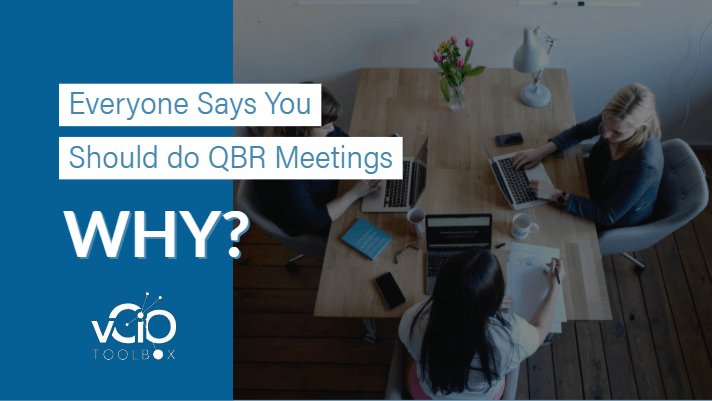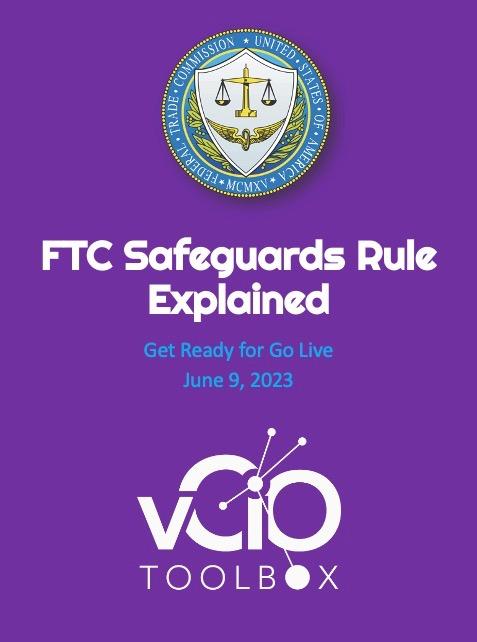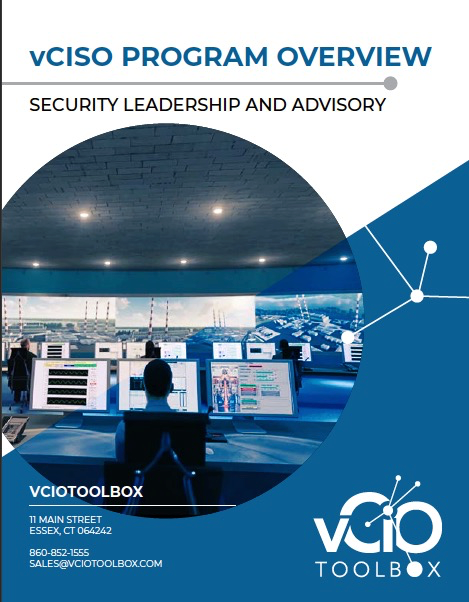One of the benefits of working with the Managed Service Provider community is that I get to speak to a lot of MSP’s. In those meetings I always ask this question ‚ What is your goal for your QBR (or vCIO)?
I get many different answers, and many MSP’s are very clear in their Quarterly Business Review/QBR vision and what results that they want to achieve by having a strategic meeting process. Unfortunately, I also often hear things like because we know that you have to do it‚ or our competition is.
Not necessarily strong endorsements for the time investment that is tied to the QBR meeting process.
I will start with the fact I am a big believer in the power of QBR’s. That is probably obvious given that we are building a business around that belief. But the process has always been a revenue driver and good customer experience when I was a MSP. It dropped money directly to my companies bottom line and created true customer loyalty
In the Information Technology industy competition is fierce. New MSP’s pop up everyday. Pricing has become commodity driven and customers always question your overall value to their company.
This is not surprising as the better a MSP does at their job through automation and remote support and the less they are seen on-site can lead a customer to wonder what we are paying for, nothing breaks anymore. The curse of the successful MSP lives and breathes.
To minimize the risk of a client acting on that belief and improve customer retention, we need to create more direct customer interaction. We have to do it for our long term well-being, but also to improve the customer experience for your client as well. That is where a well executed QBR meeting can be gold.
Why Many QBR Meetings Fail
1. No Plan- Too many MSP’s go into the meeting with no plan what they want to accomplish and what outcomes they want to drive with their client.  To hold a successful meeting you need to be in control of the discussion, but too often conversation steers to the “problem of the day” or a rehash of issues from the past.
Other meetings will stray into the more tactical conversations with reviews of reports from PSA and RMM systems. You have to set goals for the meeting and create a win/win approach so both your customer and your MSP can benefit from the meeting. You need a strong customer experience strategy.
2. Focusing on your accomplishments: Yes, in the QBR you may want to highlight ticket counts and projects completed, but too many QBR’s are boast sessions.
MSP’s spend too much time talking about the service they provided over the last quarter to justify their contract. It is often forgotten that this is an opportunity to learn what new initiatives or challenges the customer faces.
Focus less on you and more on them, like the old saying goes two ears, one mouth, use them in that order.
3.. Confusing or inconsistent documentation: I speak from experience on this item. When I started doing QBR’s (then called strategic meetings) 15 years ago, I would be the first to say that my meeting presentations and reports changed from meeting to meeting, client to client. I used PowerPoint, spreadsheets, RMM and PSA reports to produce great “thud factor”, but very little to help the customer see clearly the issues we need to focus on remedying.
The challenge is that without a regular format supported by consistent reporting the customer didn’t know what to expect in the meeting and key stakeholders will often stop attending.
4. Getting the right people in the room: This leads us to this point, often when an MSP holds a QBR it is only between their primary contact and themselves. This causes decisions to often be made in a vacuum or stall without support from influencers and stakeholders throughout the organization. 
Additionally, often the primary contact is just an influencer in the decision making process. It is their job to vet the recommendations we make but others control the purse strings. We need to get these people to the QBR meetings, but if you cannot provide each attendee with a nugget of value that they can directly latch on to, their attendance will be one and done….and so may be you and your MSP at contract expiration.
5. Being too technical: So you have the right people in the room, another easy way to empty it is to get too technical. Since the majority of SMB’s serve the small to mid-sized business community many of the attendees may not be tech savvy. 
QBR’s (ahem, Quarterly Business Reviews) can die by the acronym. Speak in letters vs. words can make the MSP seem unrelateable or even arrogant as their audience may not know the meaning for each.
Additionally, talking about tech concepts without providing the room with the “why” it is important to them and the problem its going to solve can also be an issue.
Change the QBR Meeting Dynamic
It isn’t difficult to overcome these issues when holding QBR meetings. You need to just put in some effort to stay in control of the meeting. This starts with setting the tone and communicating the format of the meeting will be more strategic. Keep it simple and focus items supporting business strategies and solutions that are customer centric.
Work with your primary contact to spread the word that everyday problems need to be left at the door, and if needed a separate meeting to address those issues should be set with the client. Just keep them out of the QBR.
Second, outline what the meeting goals you want. They should be focused on strengthening the Business/Technology alignment for the client. Drill deep on the Business Goals and Challenges they have for their business, not just IT goals.
Examples could be “we are trying to triple our revenue over the next 3 years”, ” we want to hire the best talent, no matter where they live”, “We need to cut staff and figure out how we can automate some of the tasks that will be left behind when those resources have to leave’.
Each of the examples can drive a technology solutions, but now you are presenting those products and services as problem solvers vs. a feature/benefit/cost sale. This elevates your status with your client. The customer feels you truly are becoming a trusted advisor. This is how you create a win/win scenario
Standardize QBR Meeting Materials
Create a standard set of meeting materials to set customer expectations from meeting to meeting.  These materials should have something for everyone in attendance. Technology Roadmaps for the CIO and Tech team, Financial Roadmap for the CFO, Summaries so the non-technical understand the problem that will be solved by each solution so they can weigh in on each recommendation and provide their opinion.
You can certainly do this yourself, but you can also standardize the process using QBR software platforms like vCIOPro to generate these materials. (Sorry for the shameless plug).  We document our process that can be done with or without our software in the PowerQBR Formula Blueprint After each meeting ask for customer feedback on how you can improve the meeting to meet the individual needs of all in attendance.
So with a little planning, a consistent meeting agenda, and staying away from the 5 QBR killers you can create amazing QBR expedience making your MSP the vendor partner your client can’t live without.


